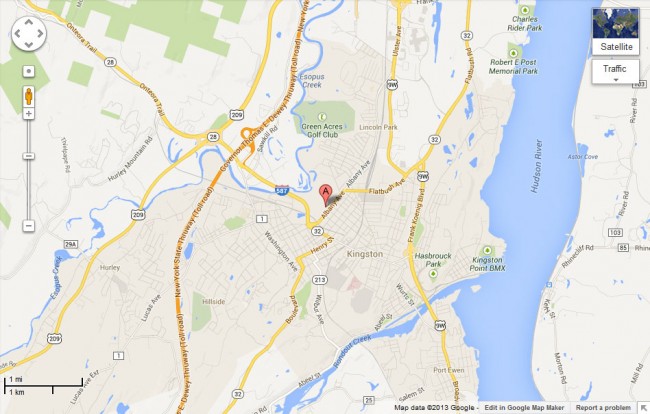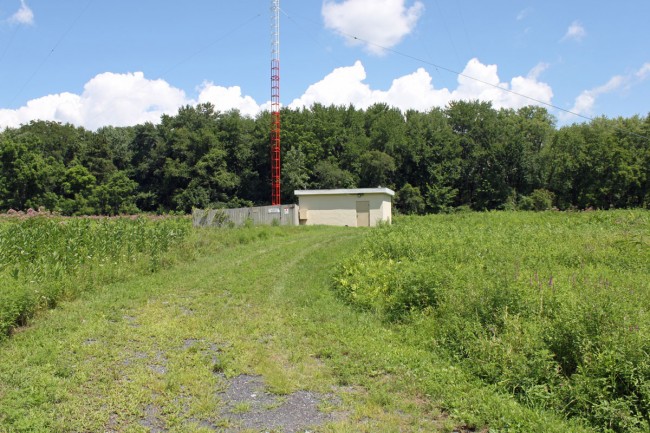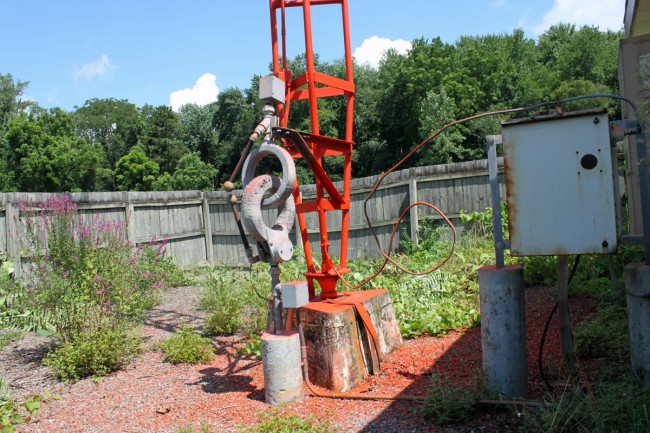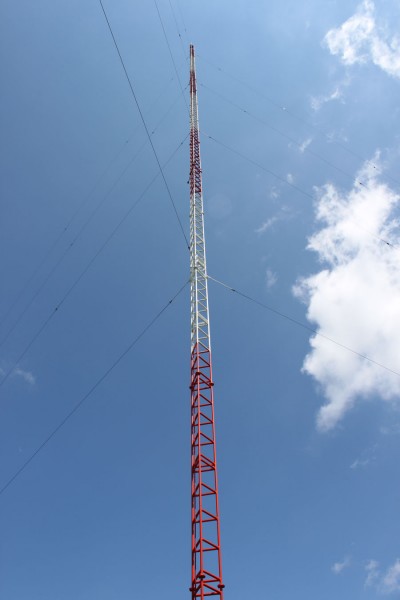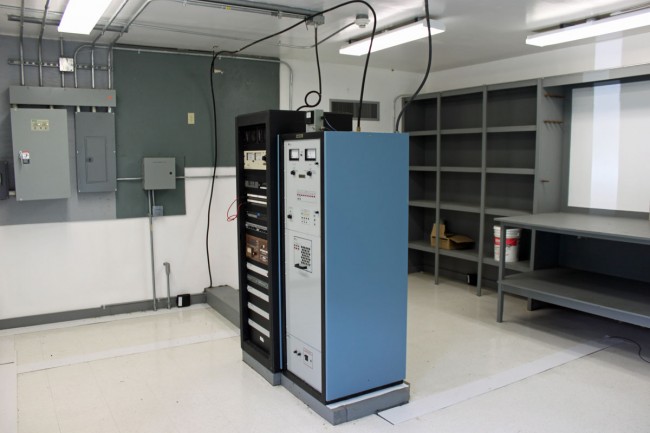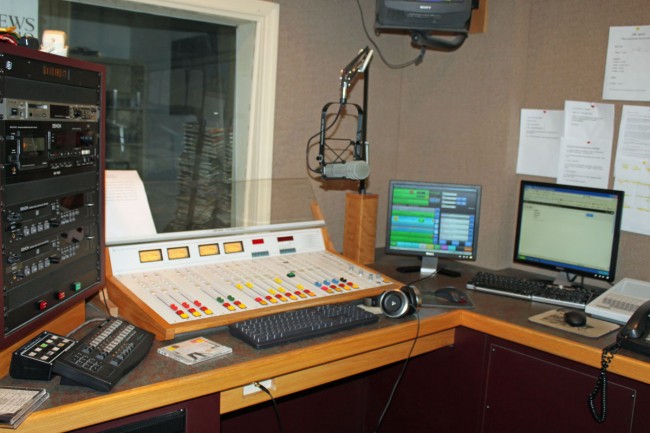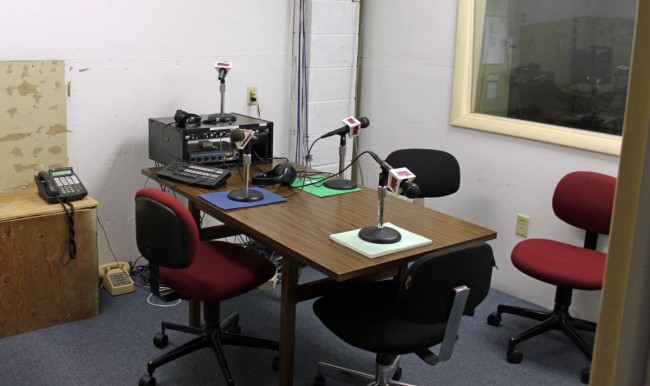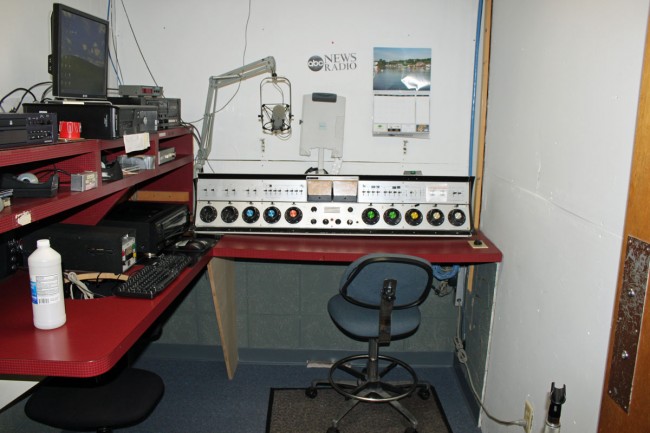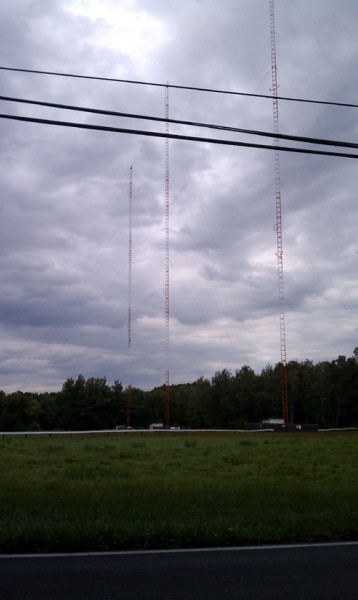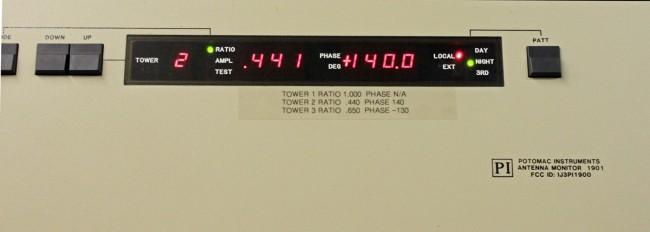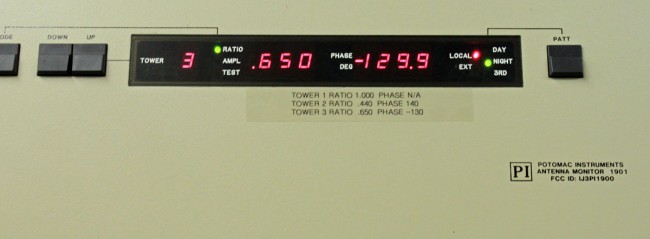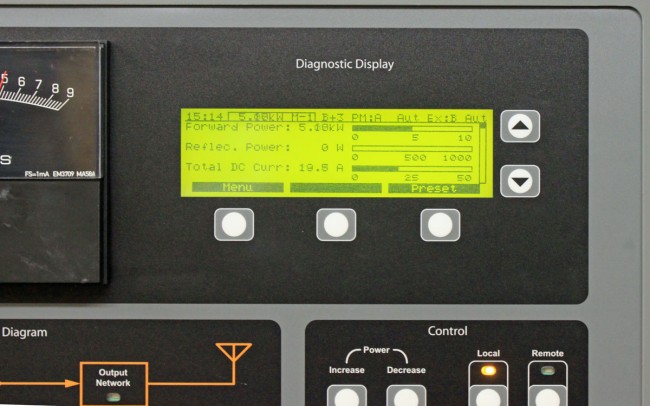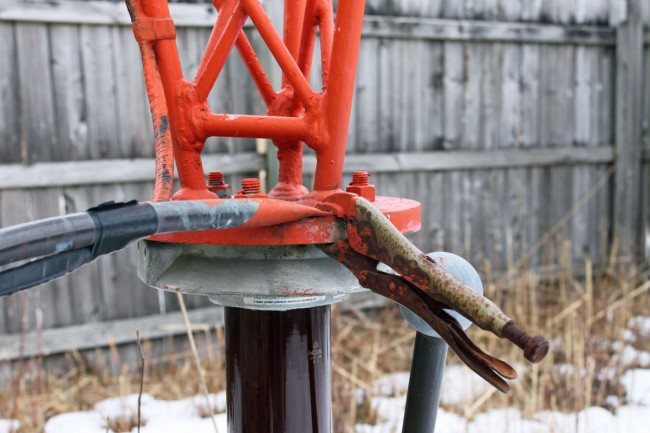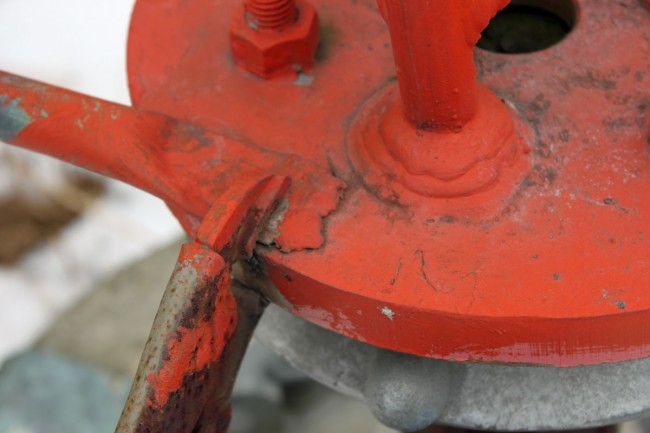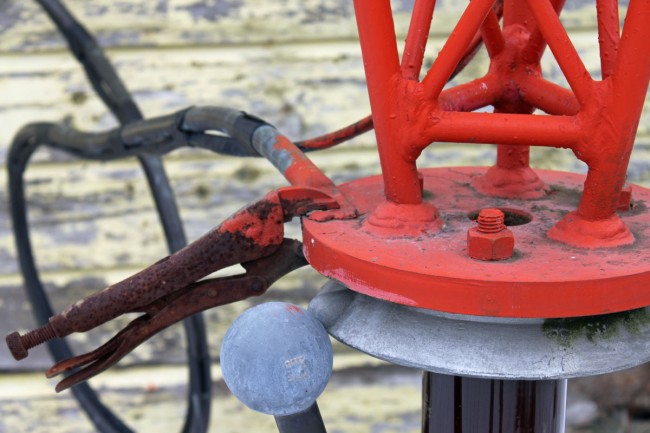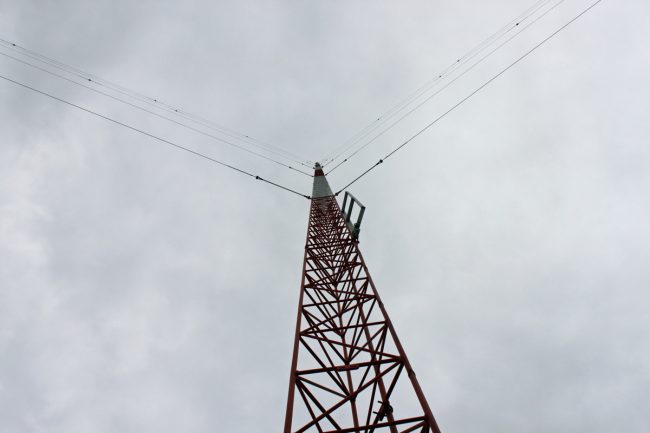Working on another AM directional station (WGDJ) which was damaged by lightning recently. In this case, the antenna array controller ceased working and one of the towers in the daytime pattern was out tolerance. Before we stared working, I told the owner to have all the vegetation cut down around the towers. This is what we ended up with:
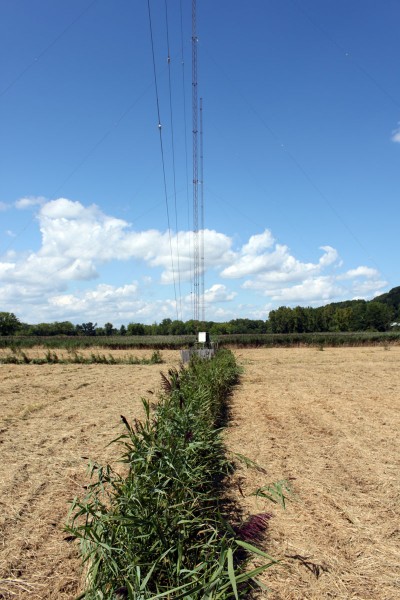
I can’t really fault them for this, but it does make work more difficult. That strip of tall green grass; that is the catwalk. The grass itself is called Phragmites, which is tall, tough, reedy stuff that can scratch and cut person unaware. The array is in a low swampy area next to the Hudson River in East Greenbush, NY. Stepping off of the catwalk, one can sometimes find solid ground, or find ones feet six inches under water.
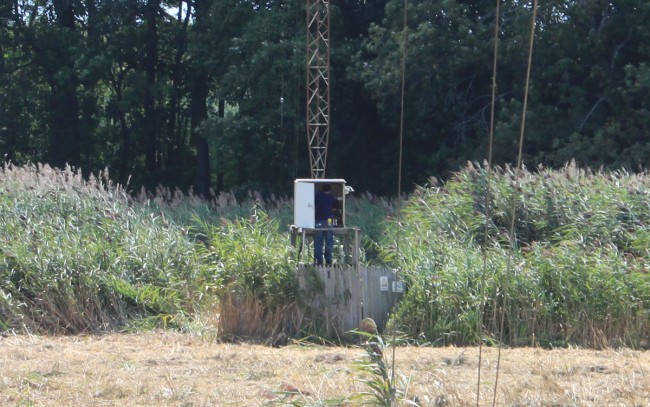
This is Mike cleaning out the mice and bees nests out of the tower #1 ATU. Notice the can of bee spray in his back pocket. This was after he was stung in the forehead.
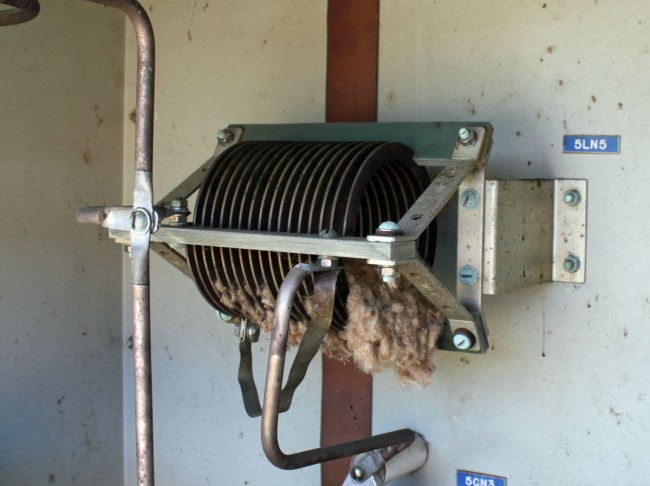
This mouse nest, at the attendant dead body in it, was responsible for a -10 degree phase shift in the daytime pattern for that tower. I hate cleaning this stuff out, it is a dirty, nasty job but necessary nonetheless. While doing this work, I wore gloves and a dust mask. The entrance hole where the AC power and control cables come into the bottom of the ATU was plugged up with some steel wool. There is still a bad capacitor in this ATU for the daytime array, that damage was likely caused by lightning.
At the end of the day, we repaired the antenna array/phasor controller; bad AC transformer and rectifier bridge and several bad logic steering diodes for tower 4 and 5, cleaned out all the vermin nests and isolated the remaining problem with the daytime antenna system. Parts should be in next week to finalize repairs.
All in all, not a bad day’s worth of work.

